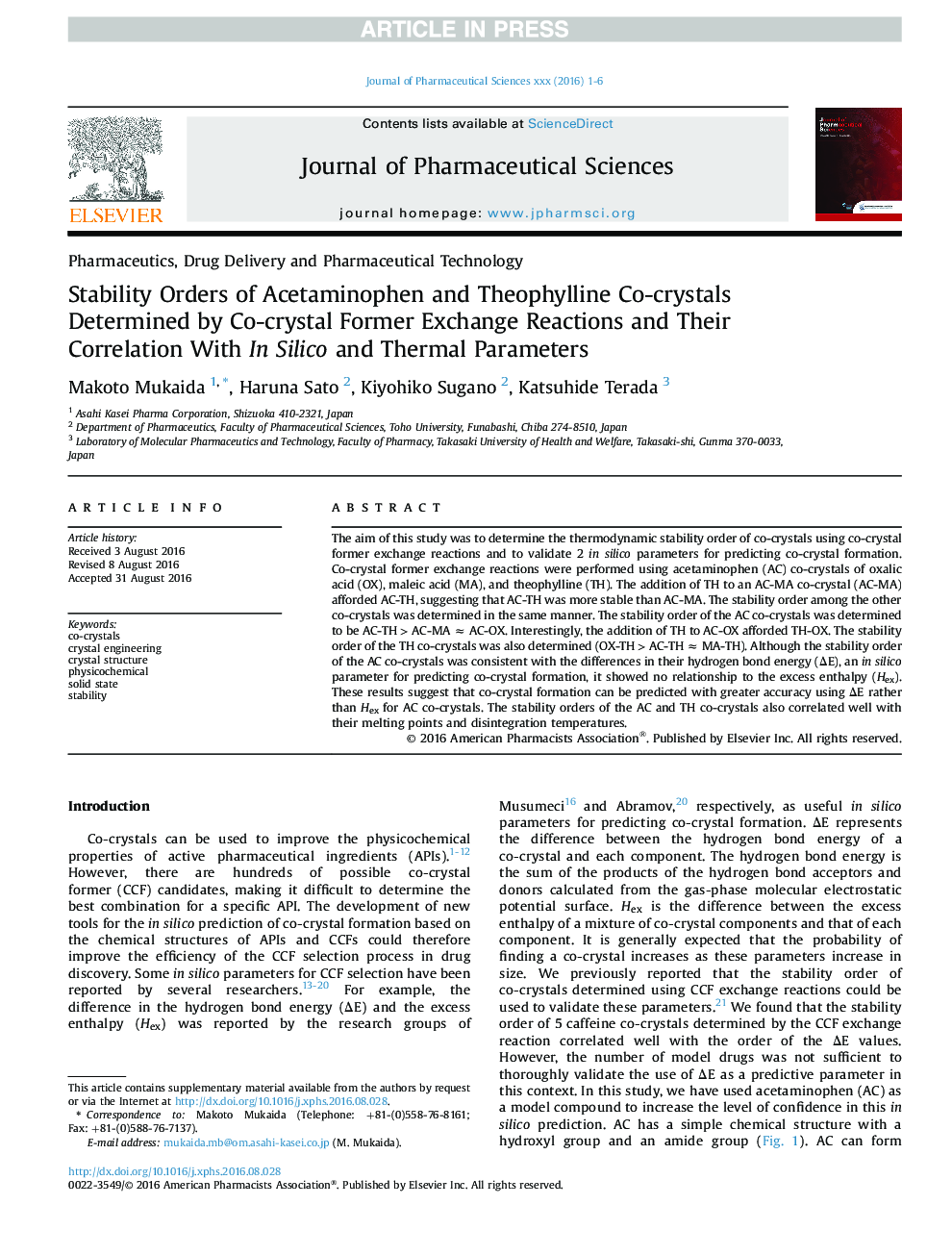| Article ID | Journal | Published Year | Pages | File Type |
|---|---|---|---|---|
| 8514619 | Journal of Pharmaceutical Sciences | 2017 | 6 Pages |
Abstract
The aim of this study was to determine the thermodynamic stability order of co-crystals using co-crystal former exchange reactions and to validate 2 in silico parameters for predicting co-crystal formation. Co-crystal former exchange reactions were performed using acetaminophen (AC) co-crystals of oxalic acid (OX), maleic acid (MA), and theophylline (TH). The addition of TH to an AC-MA co-crystal (AC-MA) afforded AC-TH, suggesting that AC-TH was more stable than AC-MA. The stability order among the other co-crystals was determined in the same manner. The stability order of the AC co-crystals was determined to be AC-TH > AC-MA â AC-OX. Interestingly, the addition of TH to AC-OX afforded TH-OX. The stability order of the TH co-crystals was also determined (OX-TH > AC-TH â MA-TH). Although the stability order of the AC co-crystals was consistent with the differences in their hydrogen bond energy (ÎE), an in silico parameter for predicting co-crystal formation, it showed no relationship to the excess enthalpy (Hex). These results suggest that co-crystal formation can be predicted with greater accuracy using ÎE rather than Hex for AC co-crystals. The stability orders of the AC and TH co-crystals also correlated well with their melting points and disintegration temperatures.
Related Topics
Health Sciences
Pharmacology, Toxicology and Pharmaceutical Science
Drug Discovery
Authors
Makoto Mukaida, Haruna Sato, Kiyohiko Sugano, Katsuhide Terada,
